Some Worcester neighborhoods are hotter than others. Here's why it matters
WORCESTER — The suffocating heat had broken. Trash and recycling piles on Vernon Hill reflected days of surging temperatures.
Empty plastic water bottles and cardboard boxes of recently purchased fans laid out on sidewalks. In the triple-deckers, blankets covered third-floor windows, while small air conditioning units sagged from others — appearing tired, defeated from the prior week of overtime. From their vents, water dripped onto patches of dried, hay-like grass, made so by drought.
Pointing to a third-floor apartment without any obvious air conditioning, Stephen McCauley, co-director of the Global Lab at Worcester Polytechnic Institute, said, "That's a danger zone."
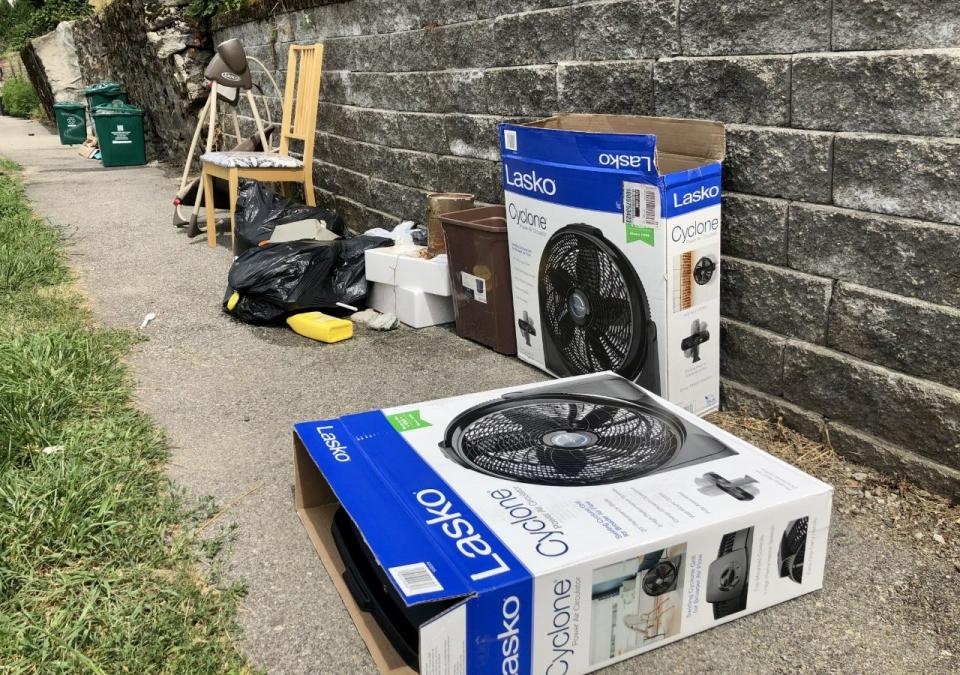
He stared down the hot pavement at the rows of older housing stock on a steep hillside, adding, "These rooftops are all just cooking." The houses were pelted by the sun's unhampered glare.
In some places, the only greenery are weeds reaching up through cracks in concrete, or an overgrown vacant lot where a "for lease" sign hangs on a rusting chain link fence.
Wednesday was the first day residents of the neighborhood said they had felt some relief, after sweltering heat brought temperatures in the 90s to Massachusetts last week, and cities felt well over 100 degrees most days.
The air didn't bear quite as much weight this week, but in Vernon Hill, it was still hot.
More: We created scorching 'heat islands' in East Coast cities. Now they're becoming unlivable
Around 2:15 p.m. Wednesday, the neighborhood registered a temperature of 91.2 degrees Fahrenheit. A simultaneous check of the Weather Channel app said 83 degrees for the area — a nearly 9-degree difference, demonstrating higher temperatures among concrete, asphalt and few trees.
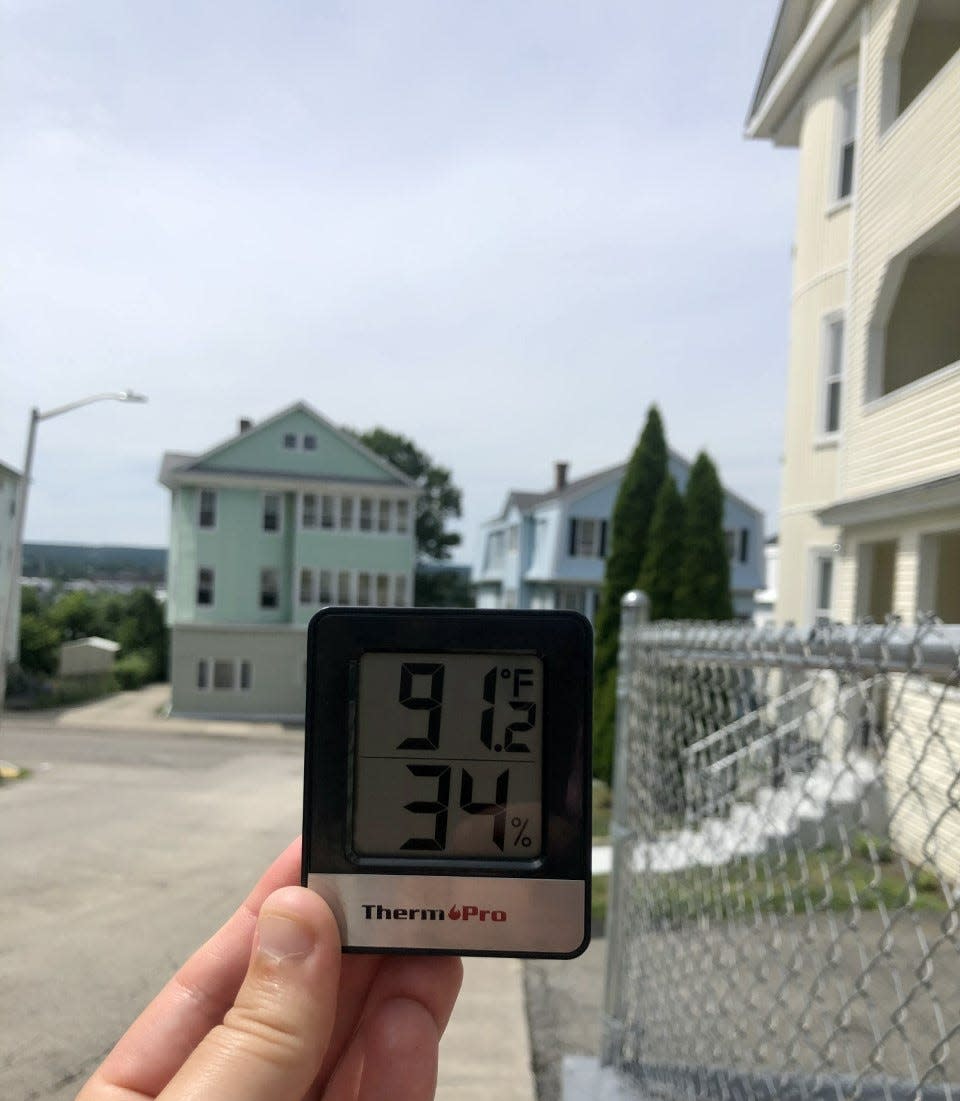
On sidewalks stretching up Vernon Hill's incline, a resident slowly lugged a grocery cart. At a nearby market selling Spanish, African and American food, a mother and her two small children waited for a ride under the shade of an awning. Barbershops and auto garages seemed to just bake in the sun, absorbing heat without interference.
What is a heat island?
Last week's weather was hot for most people, but it was hotter for residents and workers in areas of Worcester such as Vernon Hill, Kelley Square and Chandler Street. That's because these areas suffer from the urban heat effect and are often designated as "heat islands."
Heat islands are areas made up of primarily impervious surfaces — such as pavement, roofing, industrial and commercial uses — and lack the benefits of a robust tree canopy. They absorb more heat than outlying areas within the same city, and they don't really cool off at night.
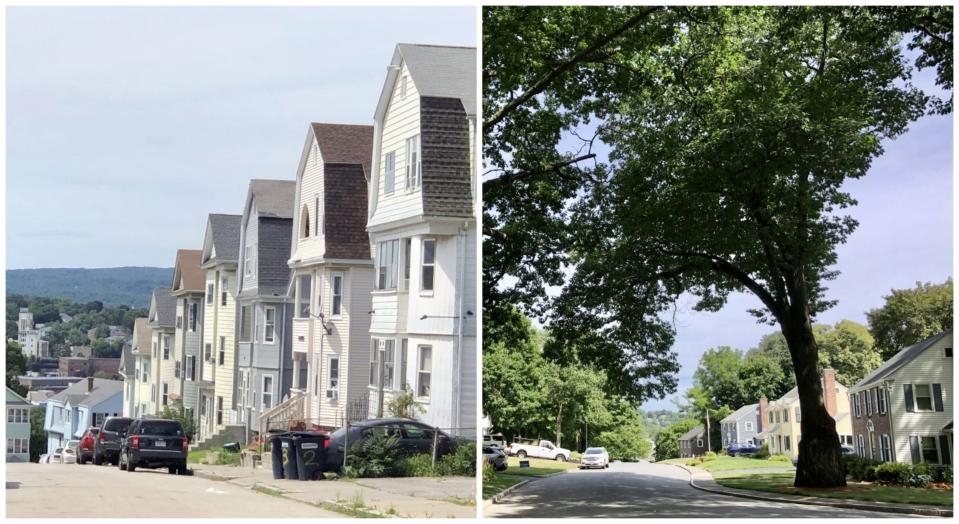
High temperatures: Worcester finding ways to cool off during summer heat
According to WPI's Global Lab, neighborhoods in Worcester can be as much as 17 degrees warmer than the air in neighboring towns, particularly in the afternoon and after sunset.
"It's serious," said McCauley, a geographer who focuses on urban change, inclusivity and resiliency, "and it's only going to get hotter."
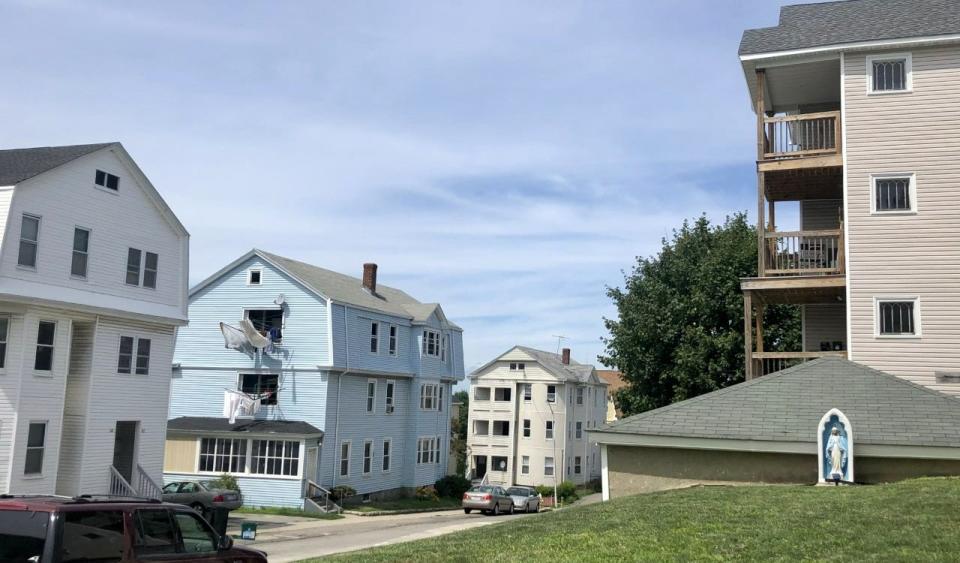
Historically, heat island neighborhoods nationwide have concentrations of low-income residents, people of color and poorly insulated multifamily housing stock. In many cases, that was by design, as the U.S. government's redlining practices of the 1930s codified the makeup of these neighborhoods and decades of disinvestment.
'By design or neglect': Flood, climate hazards threaten MA's redlined neighborhoods
The urban heat effect can make it harder for the human body to bounce back from a hot day’s dangerous impacts, especially in the case of elderly people, children younger than 5 and individuals dealing with asthma, diabetes, high blood pressure and obesity.
And heat waves could become deadlier for those in the Northeast the hotter it gets, as people in New England are structurally less prepared for the type of weather hazard and biologically, their bodies aren't as acclimated to extreme heat.
From 1992 to 2021, extreme heat killed an average of 158 people per year in the U.S., more than any other weather hazard.
Temperatures vary drastically between Worcester neighborhoods
In New England's second-largest city, half the residents once lived in triple-deckers. Most were built during the mid-19th century to the 1930s for people who worked in nearby factories, and nearly 5,000 of those buildings still stand in Worcester.
The structures are poorly insulated — causing problems in both the summer and winter — and often located in areas with lots of "gray" infrastructure, and very little green.
Energy efficiency: Big changes could be in store for nearly 5,000 3-deckers in Worcester
'By design or neglect': Flood, climate hazards threaten Massachusetts's redlined neighborhoods
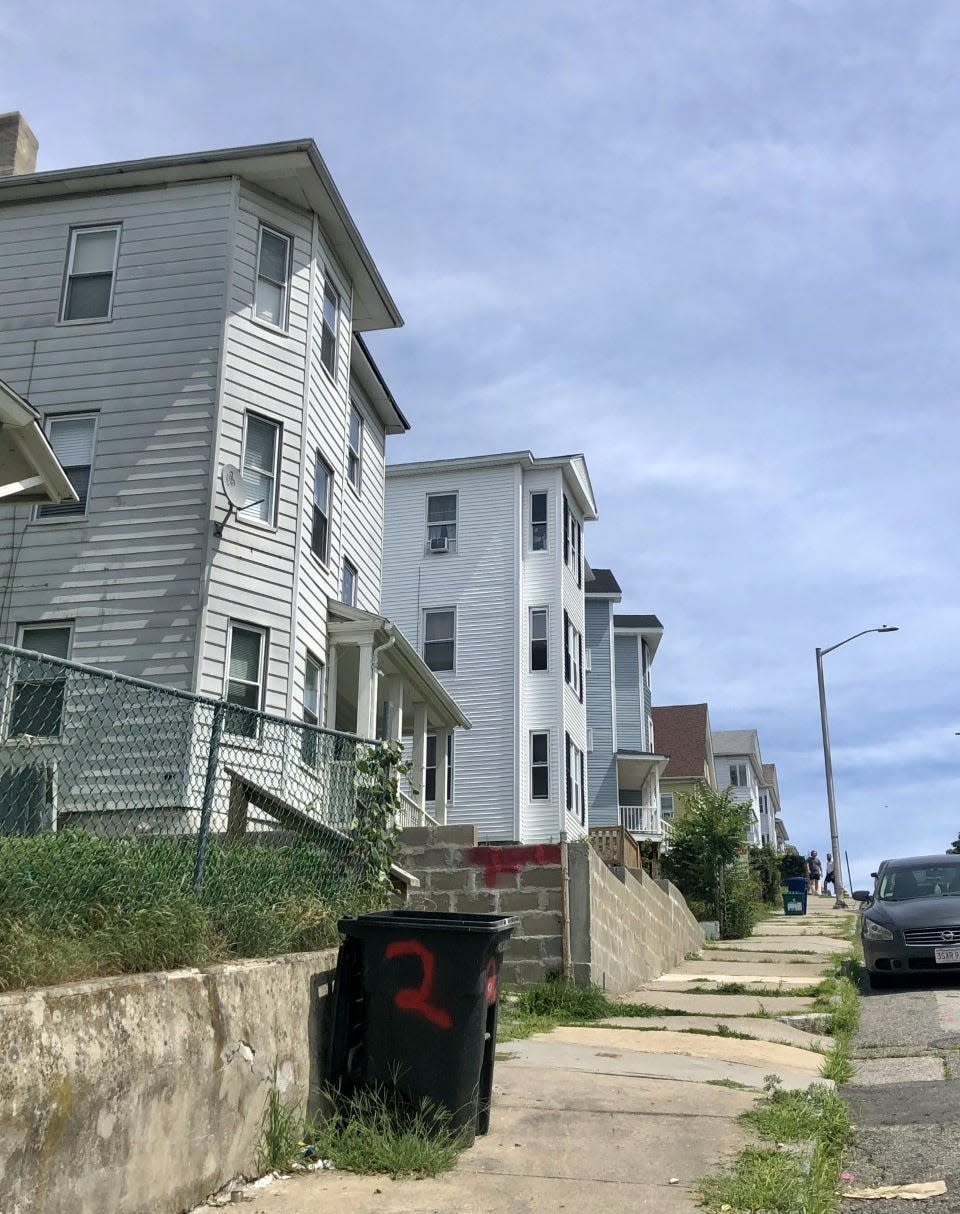
A few years ago, McCauley was part of a citizen science heat mapping project that ultimately delivered a "heat watch" report to the city. On an August day in 2019, volunteers traversed four study areas in Worcester and collected more than 63,000 measurements of temperature and humidity. The highest temperature difference between areas was 16.9 degrees.
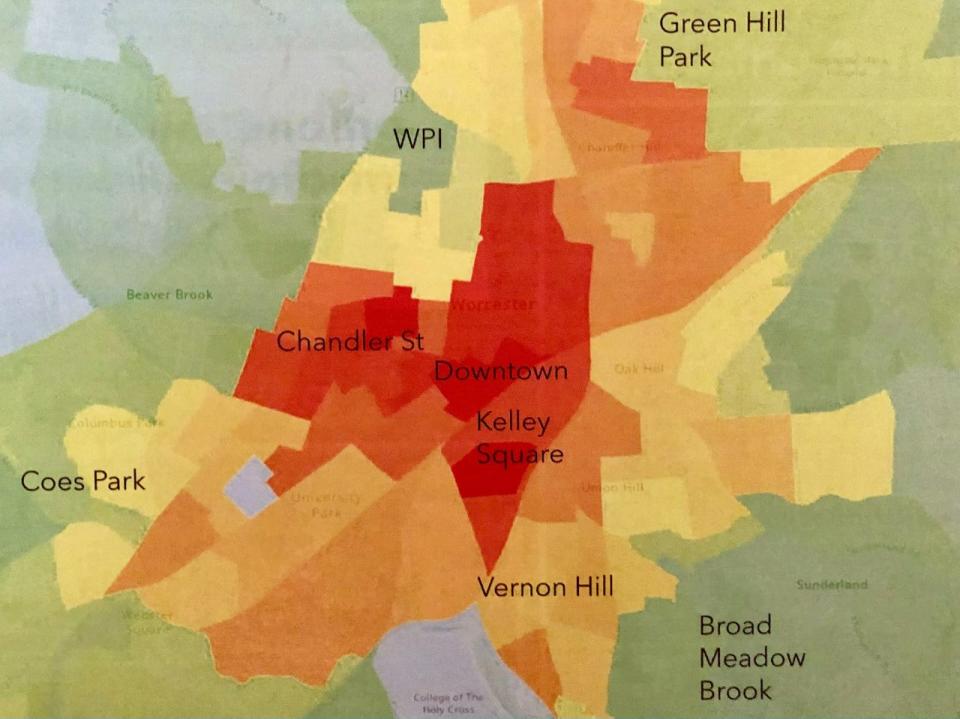
Just 10 minutes away from Vernon Hill is the WPI campus and its surrounding neighborhoods. There, trees are lush and plentiful, and so are water sources like manmade ponds. The housing stock is mostly single-family homes.
Around 3:15 p.m. Wednesday, just after Vernon Hill registered a temperature of 91.2 degrees, the Academy Street area was 84.6 degrees.
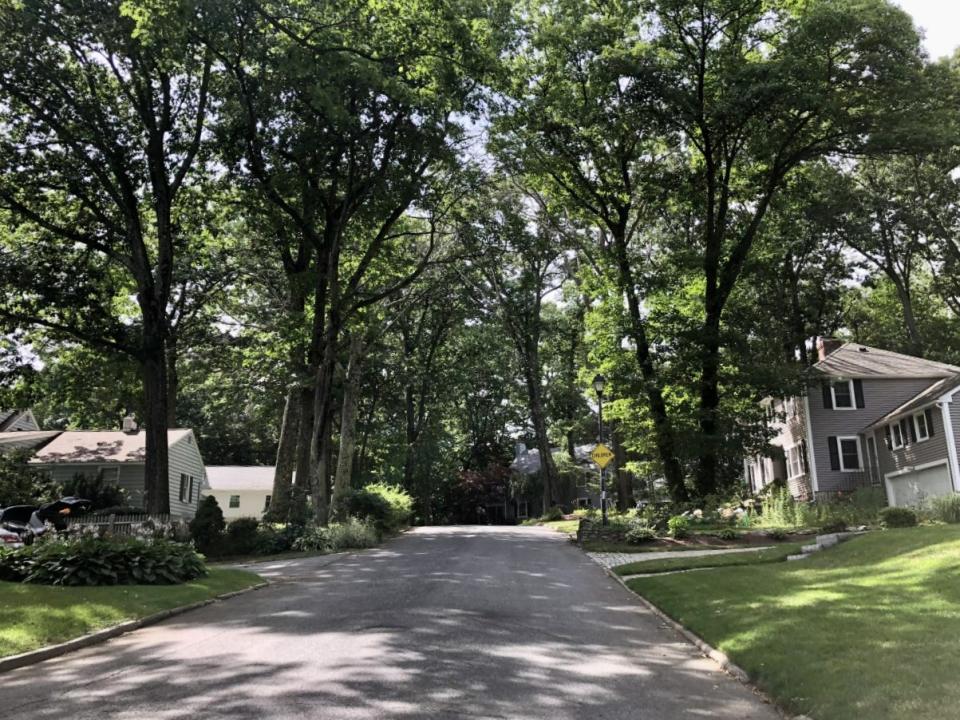
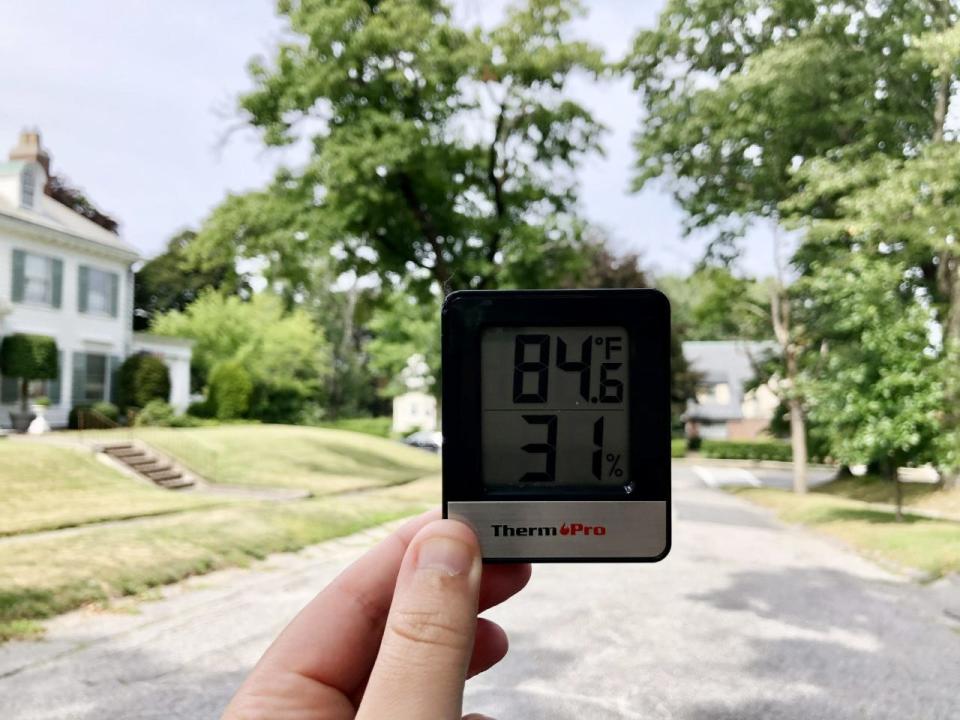
'It was so hot, it was hard to do things'
When Wadan Malikzai arrived home from work Wednesday, his children, watching from an open window, ran down from their apartment to greet him on the sidewalk.
Malikzai and his family have lived on the third floor of a Sterling Street triple-decker for three months after coming to the U.S. from Afghanistan nine months ago.
"My apartment is hot," said Malikzai. "(Last week) it was so hot. The kids want to play outside, but the weather is not good."
What did they do to stay cool? Malikzai laughed that they "swam in the bathtub."
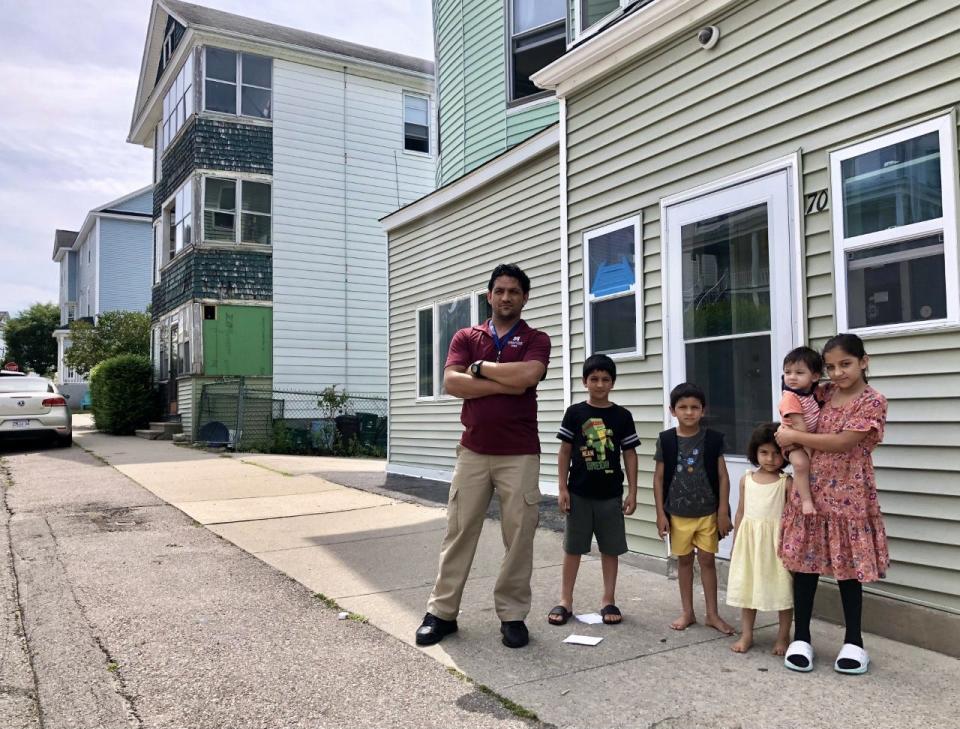
Living in an apartment next door is Christine Cooper, who has been working double shifts during the heat as a cashier at a Mobil station. As soon as she gets home, she switches on her fans.
"It's kind of rough," Cooper said. "It was so hot (last week), it was hard to do things."
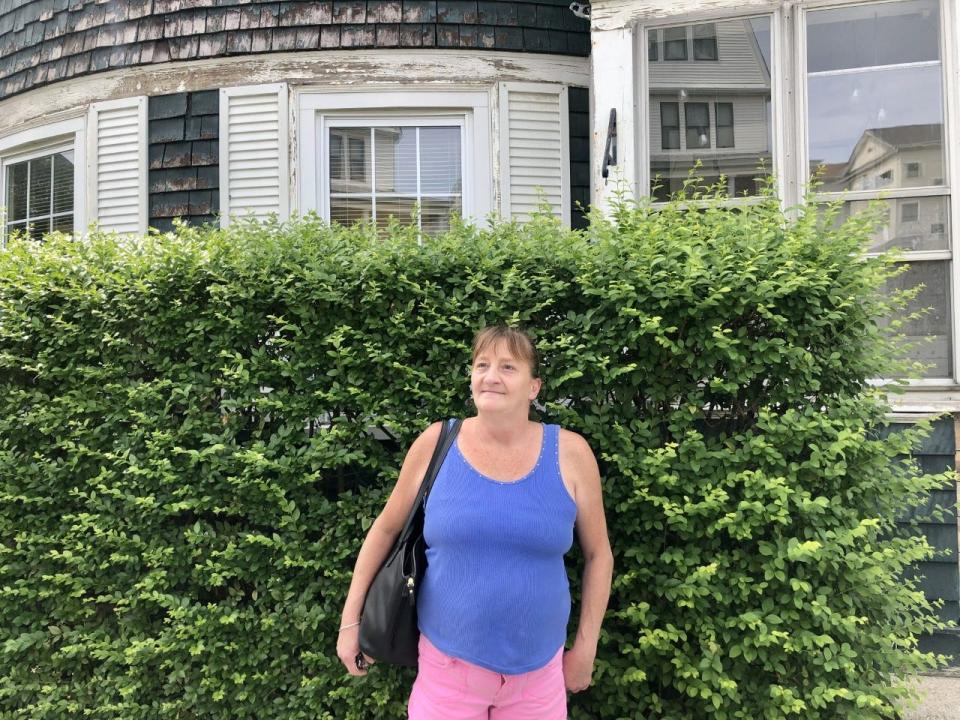
When asked about how the neighborhood responded to the heat, Cooper pointed to an interconnectedness among her neighbors, specifically that several of the nearby triple-deckers are owner-occupied. She feels people have a stake in her immediate vicinity of the street.
Through his research at WPI, McCauley has studied how areas with high rates of foreclosure, eviction and crime increase overall vulnerability during high temperatures. He pointed to the "social fabric" of a neighborhood being an indicator of whether residents come together to fight the heat and look out for each other.
"Making sure people are connected with other people is a way of making heat waves less deadly," he said.
Heat is no friend of dogs: 'They can’t...pour themselves a glass of water'
On nearby Harlem Street, Justin Noonan lives in a three-story building across from a gospel church, where two mighty trees used to provide great shade out front on hot days — their branches creating a canopy across the street and over the front of his apartment.
But a few years ago, when an Asian long-horned beetle infestation struck parts of the city, the trees were cut down and never replaced, though thousands of other new trees were replanted across the city. Today, Noonan says you can cook an egg on the side of his house between 2 and 6 p.m.
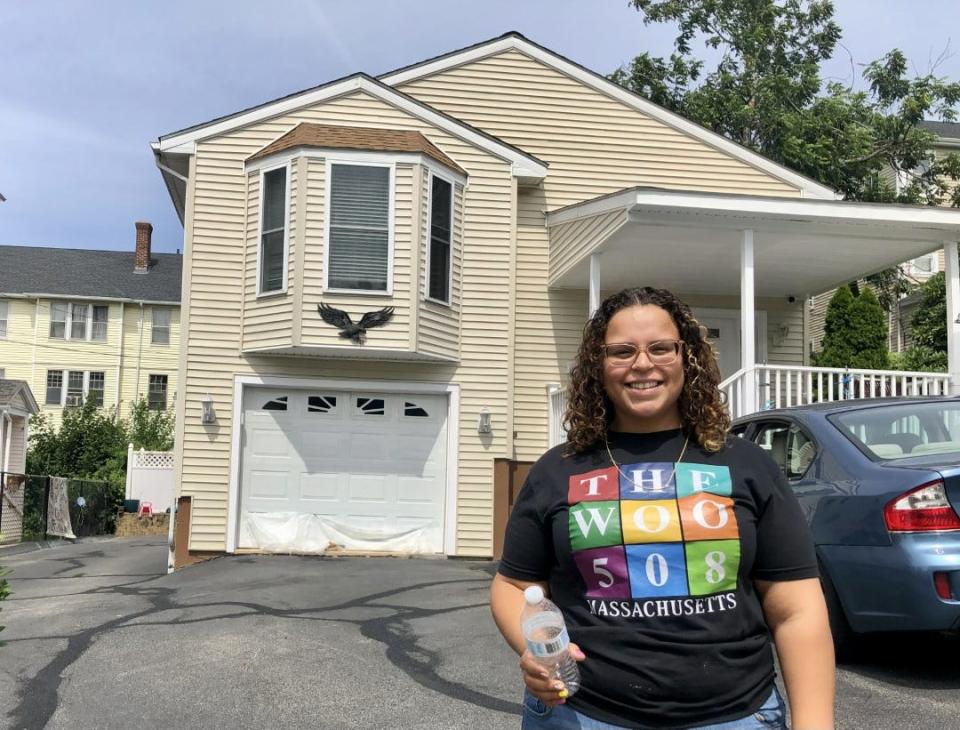
Downhill getting closer to the highway, Kamil Rodriguez stood outside her mother's house on Fairfax Road holding a plastic water bottle. She watched a group of kids, including her daughter, play with bikes and scooters across the street.
"They've drank more water in the last couple days than in the last year," she said.

Rodriguez said her mother comes out on the porch in the morning to get a short respite of cooler air and then spends the rest of the day inside.
When the AC is off, "it's terrible," Rodriguez said.
The 15-acre Vernon Hill Park is surely a source of cool for the neighborhood, with the Dennis F. Shine Memorial Swimming Pool featuring a spray park. The pool usually extends its hours into the evening during high temperatures.
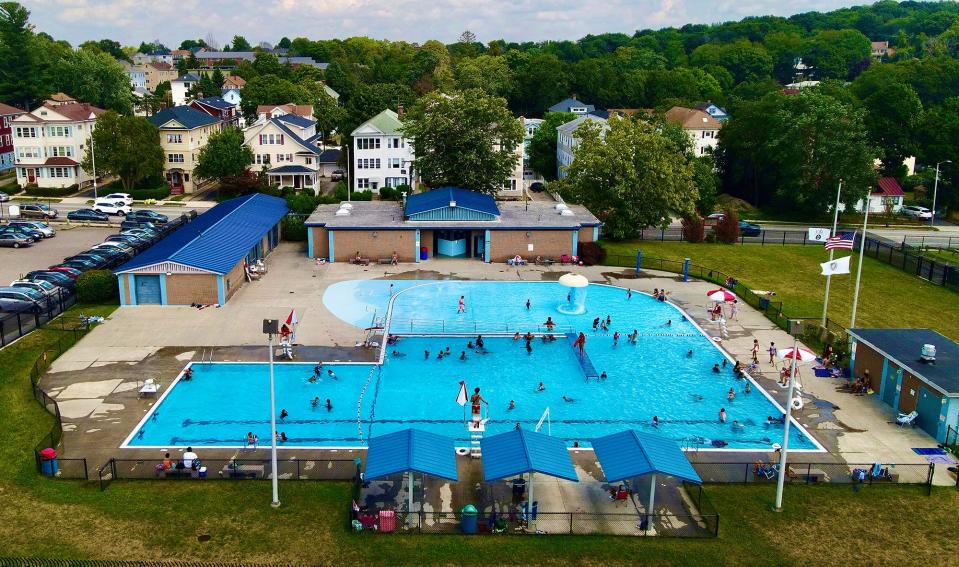
The Worcester Senior Center is also located in Vernon Hill. It's a city-designated cooling center on hot days and an example of green infrastructure efforts to ward off the urban heat effect at a 75% impervious site. The city reconstructed the parking lot to feature rain garden and bioswales, which are vegetated ditches used as alternatives to concrete gutters and storm sewers. Trees and plants were added, too.
How trees can help cool down a neighborhood
Worcester has a new Urban Forestry Tree Commission, created to focus on the future of the city's tree canopy while advancing the mission of the Green Worcester plan, an extensive roadmap to bring sustainability values to all aspects of city life.
A specific task for the commission is to prioritize the expansion of trees in the urban core: "to provide shade, mitigate the urban heat island effect and allow absorption of rain and storm water."
More: Climate change a 'grave concern' in Worcester, and city has a plan, but is it achievable?
Planting new trees in neighborhoods disproportionately impacted by heat will prove critical as Massachusetts is predicted to see an increase each year in the number of days reaching 90 degrees or hotter.
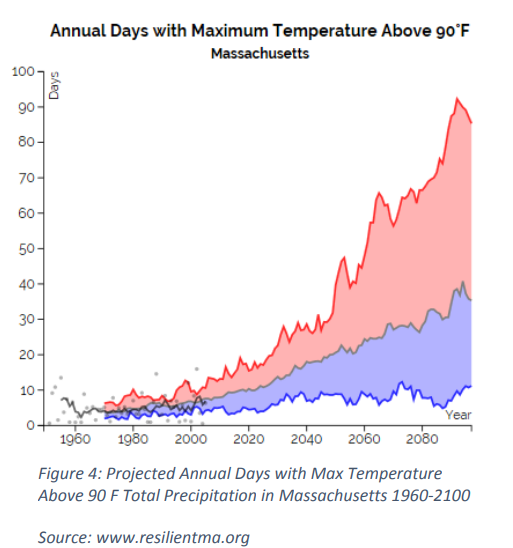
The Environmental Protection Agency says shaded surfaces can be 20–45°F cooler than the peak temperatures of unshaded surfaces.
Worcester residents and business owners in certain areas can also request trees — for free — via the Massachusetts Urban Canopy Project, which says "the net cooling effect of a healthy tree is equivalent to 10 room-size air conditioners operating 20 hours a day."
The only string attached is an agreement to water the tree for two years. The program offers more than 40 types of trees, with shade trees as the priority.
Drought in Massachusetts: DPW says Worcester water supplies are safe
McCauley said he's impressed by the city's efforts around green infrastructure thus far, and he hopes WPI's data continues to inform where and how efforts should be directed.
In February, McCauley and student Tarang Shah published a report about improving resilience in Worcester during hot weather. Their recommendations include street tree planting, housing retrofits and making analysis and data accessible to the public.
Watertown ... these names mean something: Coastal flooding may impact people as far inland as Arlington. Can mitigation steps help?
This story is part of an extensive USA TODAY Network reporting project called "Perilous Course," a collaborative examination of how people up and down the East Coast are grappling with the climate crisis. Journalists from more than 30 newsrooms from New Hampshire to Florida are speaking with regular people about real-life impacts, digging into the science and investigating government response, or lack of it.
This article originally appeared on USA TODAY NETWORK: Worcester heat islands: Neighborhoods struggle in hot temperatures

